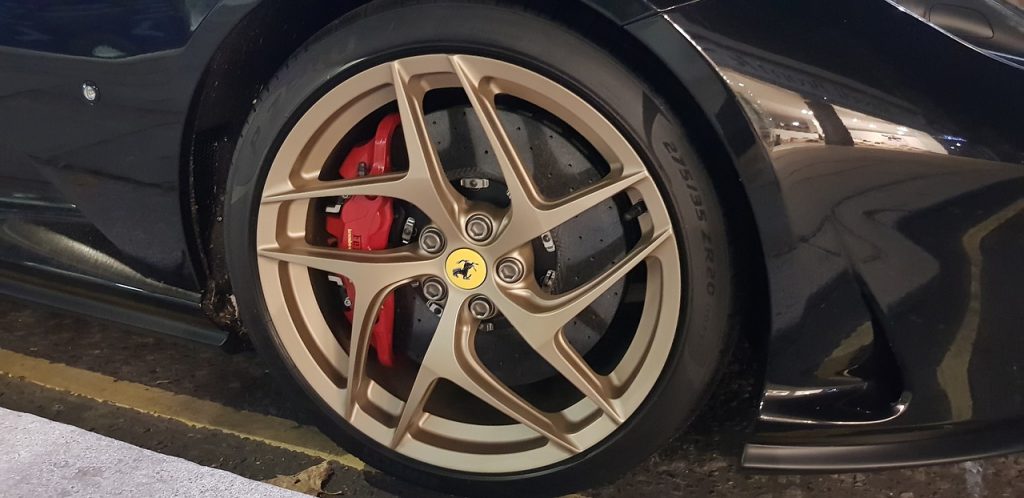Contents
Role of the brake booster
Step 1: Check the brake calliper
Step 2: Test the vacuum system
Step 3: Check the vacuum hose
Step 4: Check the vacuum pump
Step 5: Change the brake servo
Step 6: Check the other components of the brake system
Your brake pedal is very firm no matter how hard you press it, and your car stops with difficulty when you pass the white line. Don’t drive like that!
You should identify the fault quickly because any defect in the braking system can be dangerous. The main component is the brake booster (called the brake servo), which is used to multiply the effort you exert on the pedal for effective braking. But other sources of failure are possible.
Caution: A braking failure is dangerous, and it is best to leave your vehicle in the care of a garage.
Here’s how to diagnose the cause of the failure if you have a hard brake pedal.
Role of the brake booster
The brake booster, also called brake servo, allows you to multiply by 2 or 4 your effort on the brake pedal.
Important: even if the braking system is functional, it is tough to activate it without the brake servo’s assistance.
It is a kind of big bell located under the brake fluid jar.
How the brake servo works
The brake servo works with a vacuum system:
A vacuum of air is created in the engine.
It is led to the brake servo through a vacuum hose, equipped with a non-return valve.
It helps you to depress the brake pedal.
1. Check the brake calliper

The brake pedal may be blocked due to a seized brake calliper.
The symptoms are straightforward to recognize:
-
- braking is constant;
-
- there is a squeaking noise while driving and a burning smell.
Good to know: even a slightly seized calliper increases fuel consumption and increases overall brake wear.
2. Test the vacuum system
-
- Locate the vacuum hose.
Good to know: you can already look at the hose condition to assess whether it may be a source of failure.
-
- Disconnect the hose from the brake servo.
-
- Start the engine and place your finger or the palm of your hand on the hose. You should feel an air suction:
-
- if there is good suction, the air vacuum circuit is OK. So it is the brake servo that is affected (step 5) ;
-
- if not, you have to check if there is a leak on the vacuum hose (step 3) or a vacuum pump failure (step 4).
3 Check the vacuum hose
-
- Look for damage to your vacuum hose: this hose should not be porous or pierced.
Good to know: good news if this is the case because it is the fastest and cheapest breakdown to repair!
-
- Measure the diameter of the hose to be changed.
-
- Buy a vacuum hose with the right diameter and replace the old one.
4. Check the vacuum pump
Depending on the type of engine, the vacuum is created differently.
Case 1: gasoline engine
The vacuum is created directly in the engine’s intake manifold at the throttle valve on a gasoline engine.
If your engine is idling correctly, it means the vacuum is created precisely.
Case 2: Diesel engine
On a diesel engine, a vacuum pump creates the vacuum.
-
- Test its operation in the same way as in step 2, by placing your finger directly on the air outlet of the air pump:
-
- if there is good suction, the leak is located at the vacuum hose (step 3);
-
- if you do not feel suction, the vacuum pump should be changed.
Change the vacuum pump if necessary
If you have identified a problem with the vacuum pump, changing it is a relatively simple operation.
-
- Unscrew the pump mounting screws with a Torx wrench.
-
- Disconnect the air hose.
-
- Remove the old vacuum pump and replace the new one.
-
- Secure it with the fastening screws.
-
- Reconnect the air hose.
5. Change the brake servo

If the air vacuum reaches the brake servo, it is probably this organ that needs to be replaced.
Inside the brake servo, the vacuum attracts a membrane and multiplies your effort when you press the pedal.
If this diaphragm is pierced, the brake servo is useless. Therefore, it must be changed.
6. Check the other parts of the brake system
Once the failed component has been changed, perform a complete brake system check:
-
- brake pads ;
-
- discs;
-
- brake fluid level.
That’s it. You are now done with changing the brake servo if you have a hard brake pedal. Please, remember to share this post and leave your comments in the section below.


